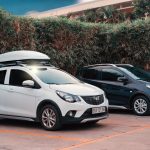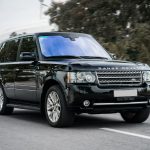The redesigned 2014 Subaru Forester crossover has an impressive new design with better styling, performance, economy, comfort, space and safety features. As the song goes, who could ask for anything more?
Early 1970s Subarus felt like tin cans, despite a ruggedness that made them popular in New England states. Subaru hung in there and gradually improved things, while wisely adding and promoting standard all-wheel drive. Car buyers began looking at Subaru in a new light, and it was on its way.
After all, Subaru is a wholly owned subsidiary of Japan’s giant Fuji Heavy Industries, which wasn’t about to give up the big U.S. market.

The fourth-generation Forester crossover’s all-new body not only looks better, with sharply defined new details, it’s also built on on a new platform with nearly a one-inch-longer wheelbase (103.9 inches). The Forester’s size is still very manageable, although length is up by 2.4 inches and width is increased just over half an inch.
2014 Subaru Forester: Good Visibility
All that helps result in more space. Even 6-footers can be comfortable in the unusually roomy backseat area, although the center rear seat area is stiff. Wider-opening rear doors and 2-inch-lower side sills make it easier to get in and out, although the step-up height is still higher than with a car. After all, there’s nearly nine inches of ground clearance,which is higher than for many crossovers.
Wide doors with easily gripped interior/exterior handles help access, and large windows allow good outside visibility for all.
Forester models are the base 2.5i, Premium, Limited and Touring. All have Subaru’s advanced Symmetrical All-Wheel Drive system with Hill Descent Control and a compact “boxer” opposed-piston four-cylinder engine.
Subarus once were low-priced, but those days are long gone. List prices for the new Forester range from $21,995 to $32,995. It comes with either a new 6-speed manual transmission or a CVT automatic transmission.
The top-line $32,995 hot rod 2.0XT Touring model’s modified CVT has 6- or 8-speed manual shift modes with steering wheel paddle switches. The 2.0XT has a new intercooled, turbocharged, direct-injection, four-cylinder generating 250 horsepower. It also features a sport suspension and larger brakes than other Foresters, with ventilated front and rear rotors.
The non-turbo 2.5 four-cylinder in the $29,995 2.5i Touring model I tested had 170 horsepower. It’s in most Foresters and provides decent acceleration in town and on highways. It loafs at 65-plus mph on the highway, but gets a bit noisy during full-throttle acceleration.
The 2.5i delivers an estimated 24 miles per gallon in town and 32 on highways. Subaru says the Forester leads its market segment in all-wheel-drive fuel economy with that engine and a CVT.
The 2.5i Touring model with the CVT and such standard items as a sunroof, premium sound system, power driver’s seat, heated front leather seats, multi-zone automatic air conditioning, navigation system, HID headlights and a power rear hatch.

Stand-alone options for lower-line models include a navigation system and a keyless push-button engine start.
All models have new, quick electric power assisted steering with good road feel for better fuel economy and more feedback. Higher-line models have more upscale luxury features. And all but the base 2.5i model come with a rear vision camera and color multi-function display.
Options for lower-line models include the power hatch with automatic close, navigation system, keyless start and adaptive cruise control.
New standard safety features for all models include anti-whiplash front seats, a driver’s knee airbag, brake override and an impact-sensing fuel system cutoff.
The Forester hot rod 2.0XT Touring model would have been more fun, but my test car had decent handling, thanks partly to a vehicle dynamic control system. The all-independent suspension provided a compliant ride, although the Forester became a little bouncy on irregular surfaces. There also was noticeable body lean when driving on freeway ramps at higher-than-posted speeds. The brakes worked fine, with nice pedal feel.
My test Forester had a quiet interior during steady highway cruising. The front seats provided good lateral support in curves, and front armrests were large and comfortably soft. Gauges could be easily read. Climate controls were large. Although small, the audio controls were fairly easy to use. Cupholders were conveniently located on the console.
The front doors had large storage pockets, and there was a deep, covered console bin. However, the glove compartment didn’t hold much more than the thick owner’s manual. The power driver’s window shot up and down so quickly it was nearly impossible to stop it part way—an annoying flaw.
The Forester’s cargo area is decent, and 60/40 split rear seatbacks easily flip forward to provide a generous 74.4 cubic feet of cargo space.
The padded hood swings up via a single strut, revealing easily reached fluid-filler areas in the surgically neat engine comparment.
The Forester has been among Subaru’s top-selling models, and the 2014 version promises to make it even more popular.
Pros: Bolder styling. Roomier. Lively performance. Available turbo motor. Supple ride. Standard all-wheel drive. Decent Fuel economy.
Cons: Bouncy ride on some roads. Body lean in curves. Base engine rather noisy when pushed.
Bottom Line: Big improvement over previous Foresters.
Dan Jedlicka has been an automotive journalist for nearly 45 years. To read more of his new and vintage car reviews, visit: www.danjedlicka.com.
Article Last Updated: August 7, 2013.
- About the Author
- Latest Posts
An automotive journalist who has reviewed more than 4,000 vehicles in a nearly 45-year career, Dan is publisher of DanJedlicka.com.






